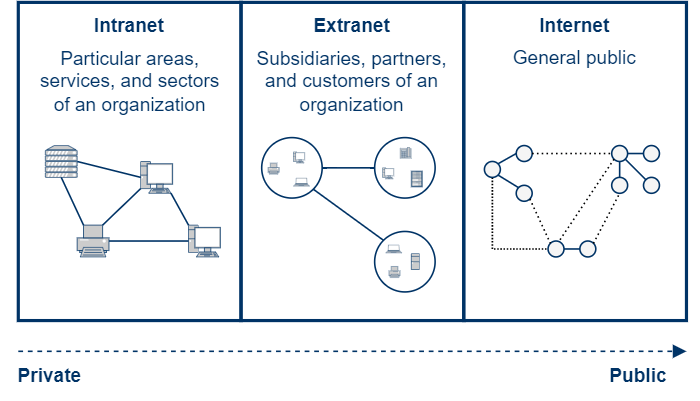I originally asked for things along the lines of survival: https://lemmy.dbzer0.com/post/4805526
With the following resources, it seems our community is off the ground in terms of bare necessities:
https://www.wikipedia.org/ (Download copy w/ pictures)
Now, what is the best FOSS way to set up communication within the compound (and between our 2 communities)?
The following list will help serve as a springboard for the types of things we’re looking for:
- Open-source server operating systems (e.g., Linux distributions)
- Open-source web servers (e.g., Apache HTTP Server, Nginx)
- Open-source database servers (e.g., MariaDB, PostgreSQL)
- Open-source application servers (e.g., Apache Tomcat, WildFly)
- Open-source server virtualization platforms (e.g., KVM, VirtualBox)
- Open-source network monitoring tools (e.g., Nagios, Zabbix)
- Open-source load balancing solutions (e.g., HAProxy, Pound)
- Open-source server backup and recovery tools (e.g., Bacula, Amanda)
- Open-source security tools for server hardening (e.g., Fail2Ban, ModSecurity)
- Open-source server configuration management tools (e.g., Puppet, Ansible)
- Open-source server monitoring and performance analysis tools (e.g., Prometheus, Grafana)
- Open-source server provisioning and deployment tools (e.g., Foreman, Cobbler)
- Open-source server access control and authentication systems (e.g., FreeIPA, OpenLDAP)
- Open-source server backup and replication solutions (e.g., Bareos, DRBD)
- Open-source server log management and analysis tools (e.g., ELK Stack, Graylog)
- Open-source server file and storage systems (e.g., Samba, Ceph)
- Open-source server containerization and orchestration platforms (e.g., Docker, Kubernetes)
- Open-source server firewall and packet filtering systems (e.g., iptables, ufw)
- Open-source server monitoring and management solutions (e.g., OpenNMS, Cockpit)
- Open-source server collaboration and communication tools (e.g., Nextcloud, Jitsi)
Edit: How do I make bullet points look normal on mobile? Sync has the page looking INSANE vs the desktop preview.
I’m struggling to see how this post relates to the [email protected] community tbh.
To be totally honest I didn’t look through everything you posted, but I’ve toyed with the idea of intranets myself and have come up with a handful of tools I really like.
- Tailscale can be used when there is a necessity to connect remote locations over “The Internet”. It is a private VPN that provides ip addresses for connected devices that are only usable to other devices within your Tailnet
- Syncthing can be spun up very quickly to distribute and sync files across devices on the local network, within your Tailnet, and yes over “The Internet” if need be. This is not full on web server level of hosting, but it can get some things off the ground quickly.
The way I’ve used this to make an “Intranet” is outlined here. I use Obsidian for a lot of note taking, link storage, and general information gathering and navigating. Obsidian stores all it’s files as plain text in a normal folder structure, but this could also be done with htlm files and a normal browser. I can target any portion of these folders with Syncthing and keep them updated across all my devices through my Tailnet. The broader usage of this begins to get into the idea of an intranet.
Let’s say I meet someone within this community, or maybe from one of the other locations. We get to talking and decide to exchange information from our respective collections. I fire up an ad hoc WiFi network off of say my phone, or a small portable router, add them to my Tailnet, which could even be optional given Syncthing’s built in encryption, add their devices Syncthing ID to the folder I want to share with them. They download a local copy of whatever data I want, and then can return to a hub of their own, maybe a home network, or a larger community wide network. Target the new data they have acquired, and sync it to the hub. We could then remove each other from our Tailnets and Syncthing instances, or leave them so we can automatically update differences when in proximity.
That’s a rough idea of how I think this system could be used for a more “personal” internet. One that focuses more on direct and intentional communication and data storage, where each user or group of users is basically selecting which data they value enough to commit drive space to. I have also researched medium and long range “WiFi” networks using radio or other signals to trickle sync nodes over longer distances. I’ve even been inspired by Factorio’s logistic drone networks and thought to attach portable routers, single board computers, and storage drives to drones or even solar gliders that can trickle sync to nodes they pass over.
Just some ideas that don’t quite fit the different systems you mentioned, but I think are a bit easier to spin up for individual users, and could decentralize the load of what you are trying to do even more. Could maybe post this in some of the other FOSS/networking/linux/privacy communities, but I’d maybe clean up the post a bit and make it clearer what you are after.
zrok might be helpful. looks like it’s an alternative to tailscale.
Never heard of this, thanks for the tip!
Wot
Sorry, maybe it’s me but I don’t find it clear what you need. Like, the actual scope of all of this. And which are the 2 communities you wanna link? Actual physical communities and so you are building a physical network? I’m not sure what are you aiming for 😮
Physical places.
Likely to be 2 intranets communicating in an extranet. But we are open to things like Usenet, LAN / PAN / WAN / MAN / CAN / VPN / EPN / SAN / POLAN / etc.

Do you have any whitepaper on what you’re building or planning? You’re reply just raises more questions. CAN is automotive networking for things like electronic braking or transmission shifting. What are you building? Without some form of intended application, this is just a random list of open source projects.
The selection of which software to use heavily depends on the scope of your project as well as the knowledge of the people maintaining it. As a rule of thumb, always choose the more minimal one over the complicated feature rich one. Most of these software are over engineered anyway.
Anyway, If it’s just communication, use IRC! It’s easy setup an IRC server and install clients on all the devices in the community.
Or if you are aiming for survival, use radio. Like have a proper ham radio setup, it’s much more resilient and reliable (survival stuff is best be kept low tech.)
I’m sorry I have zero knowledge about intranet/extranet stuff. Ig if requires setting up your own like routers and direct wiring between the two communities.
Reticulum and Nomad Network might be what you need.







